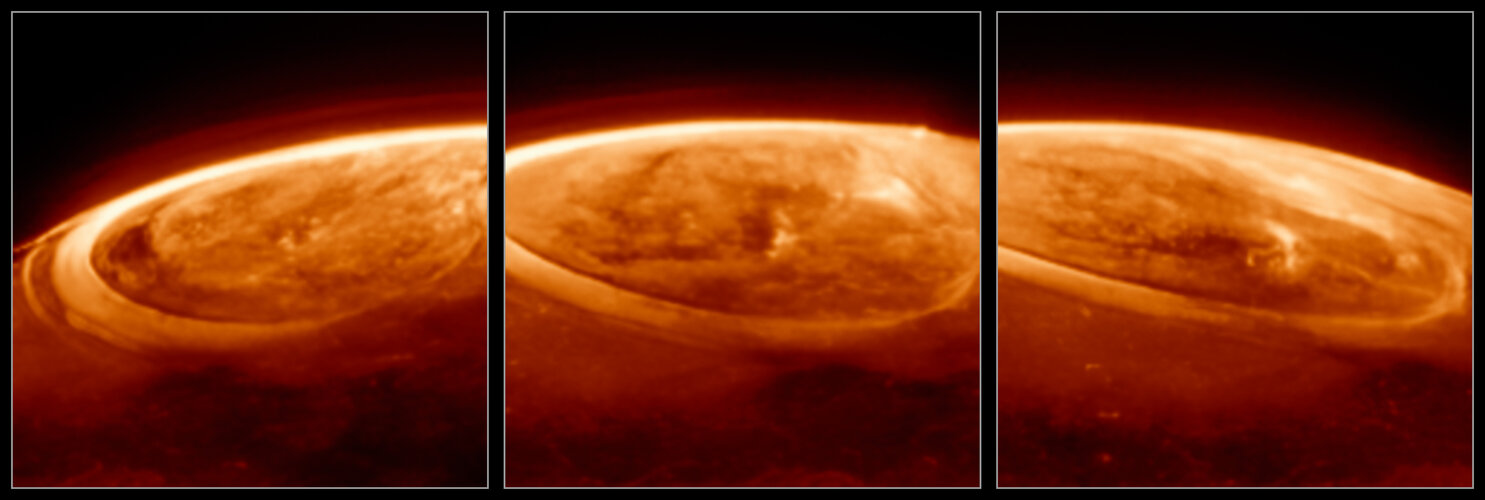
The team’s data found that the emission from the trihydrogen ion, known as H3+, is far more variable than previously believed. The observations will help develop scientists’ understanding of how Jupiter’s upper atmosphere is heated and cooled.
The team also uncovered some unexplained observations in their data.
“What made these observations even more special is that we also took pictures simultaneously in the ultraviolet with the NASA/ESA Hubble Space Telescope,” added Jonathan. “Bizarrely, the brightest light observed by Webb had no real counterpart in Hubble’s pictures. This has left us scratching our heads. In order to cause the combination of brightness seen by both Webb and Hubble, we need to have an apparently impossible combination of high quantities of very low energy particles hitting the atmosphere – like a tempest of drizzle! We still don’t understand how this happens.”
The team now plans to study this discrepancy between the Hubble and Webb data and to explore the wider implications for Jupiter’s atmosphere and space environment. They also intend to follow up this research with more Webb observations, which they can compare with data from NASA’s Juno spacecraft to better explore the cause of the enigmatic bright emission.
These insights may also support the European Space Agency’s Jupiter Icy Moons Explorer, Juice, which is en route to Jupiter to make detailed observations of the giant gas planet and its three large ocean-bearing moons – Ganymede, Callisto and Europa. Juice will take a look at Jupiter's auroras with seven unique scientific instruments, including two imagers. These close-up measurements will help us understand how the planet's magnetic field and atmosphere interact, as well as the effect that charged particles from Io and the other moons have on Jupiter's atmosphere.
These results were obtained from data using Webb’s Cycle 2 observing programme #4566 and Hubble’s observing programme #17471. The results were published today in Nature Communications.



